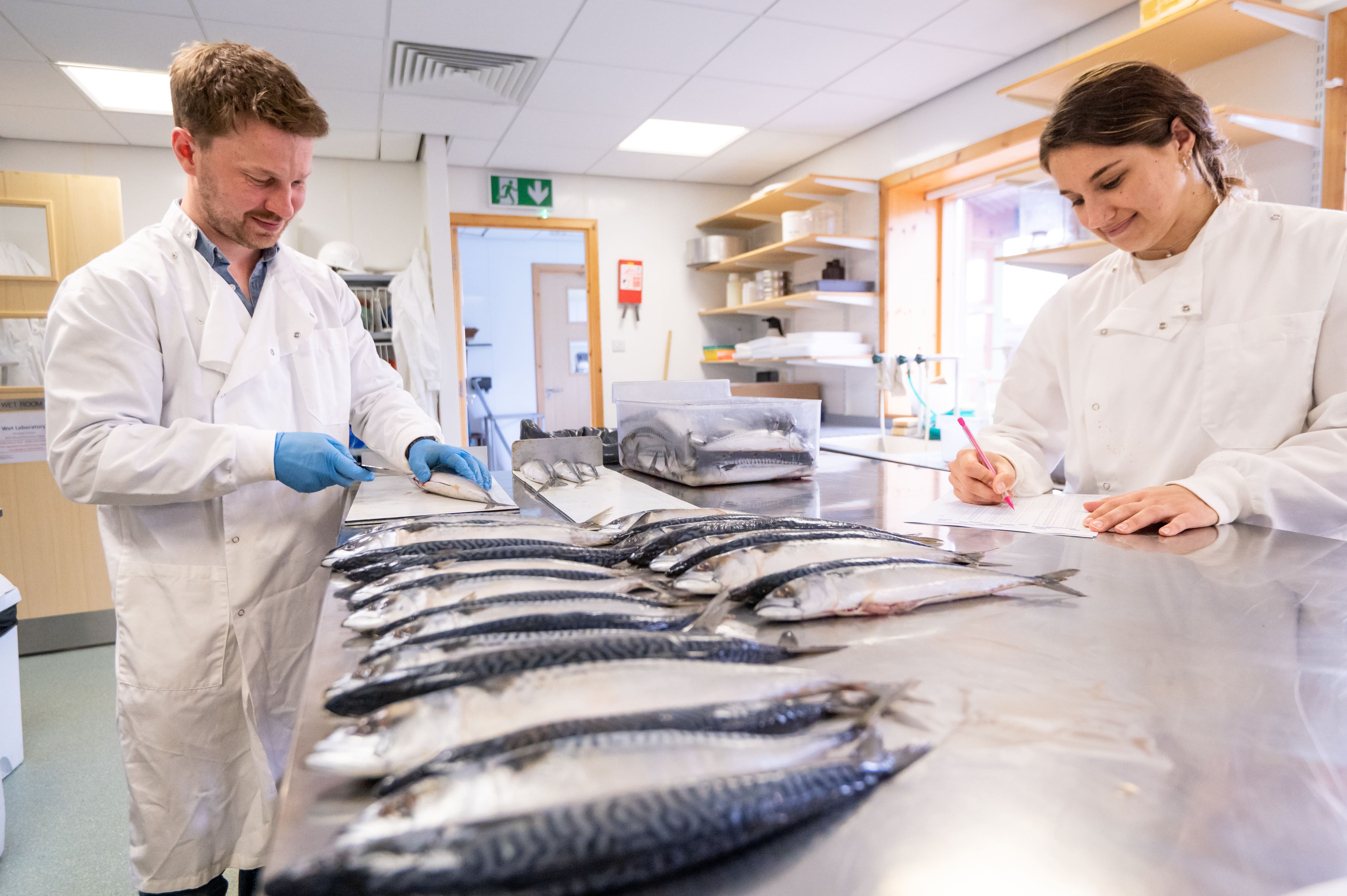UHI Shetland Marine Scientists


Lobster sampling
Join the UHI Shetland fisheries team as they sample lobsters in Yell. This 360 video is best viewed on a VR headset.
The lobsters are measured using calipers and the size recorded to ensure that those landed meet the minimum requirements, and to provide more information on the lobster stocks in Shetland. They also record the sex of the lobster and check whether any of them have berries (eggs) attached.
Measuring lobsters
Measuring lobsters
The lobsters are measured along their "carapace" or body shell from the eye socket to the beginning of the tail using calipers. Their size can be read from the tool.
There is a minimum size that fishers want to catch so that the lobsters have a chance to breed before they are harvested, this helps to preserve the future stock. If they are smaller than 87mm they are returned to the sea. There is also a maximum size of 145mm for female lobsters. This protects the large individuals as the bigger the lobster, the more eggs can be produced.
UHI Shetland's fisheries research vessel Atlantia II
Explore the inside of UHI Shetland's own research vessel our fisheries scientists use for conducting research surveys. These surveys provide important information on how many fish are in local waters, where they are and which species are present. This allows predictions to be made on the health of the fish stocks, potentially uncovering new opportunities for fishers.
Shetland Inshore Fish Survey
Shetland Inshore Fish Survey
The Shetland Inshore Fish Survey is carried out every year during August and September by the UHI Shetland marine scientists. Using the Atlantia II (LK 502) pictured in the 360 video, they travel to 52 locations around Shetland measuring over 10,000 fish.
The net at the back of the boat in the video has a smaller mesh size than would normally be used by fishers who would be selling their catch commercially, for shops or restaurants. This allows data to be collected on how many young fish there are. This information would not normally be available from fishers as they have a minimum size of fish that they are allowed to land, and they can only use nets of certain designs.
The metal table to the right of the video is where the fish are measured. They are placed along the metal ruler, their size is noted and then they are sent down the chutes at the front of the table. The fish are kept in the hold below the deck until they are taken to the market to be sold. This hold is accessible through the metal cover the camera is positioned upon.
In 2024, haddock was the main species caught. They found increased numbers of young fish, below the age of 1, compared to previous years. This is positive for showing fishers that they may be able to catch more of these fish in future years once they have grown.
Squid levels were also high, this is relevant as there is currently a pause on fishers being able to catch squid around Shetland. Having this data available is important for discussing what impact these high squid levels may be having on other fish species.
The marine scientists are able to create maps of where different species of fish are mainly found around Shetland. They also create graphs of their data including how many fish they catch of each length and how it changes from year to year.
The marine scientists now have 14 continuous years of survey data which is very useful for showing trends in the amount of fish of each species being caught and what size they are.
Read this year's report via the link below to find out more:
Monitoring non-native invasive species
Non-native species are animals or plants that have been introduced to Scotland by the activities of people, either accidentally or on purpose. They prefer to grow on man made structures such as those found at the marina in the video. Some of these species can cause problems for local industries such as aquaculture and fishing so it is important to monitor where they are being found and where they are spreading to. The marine scientists at UHI Shetland collect data on this.